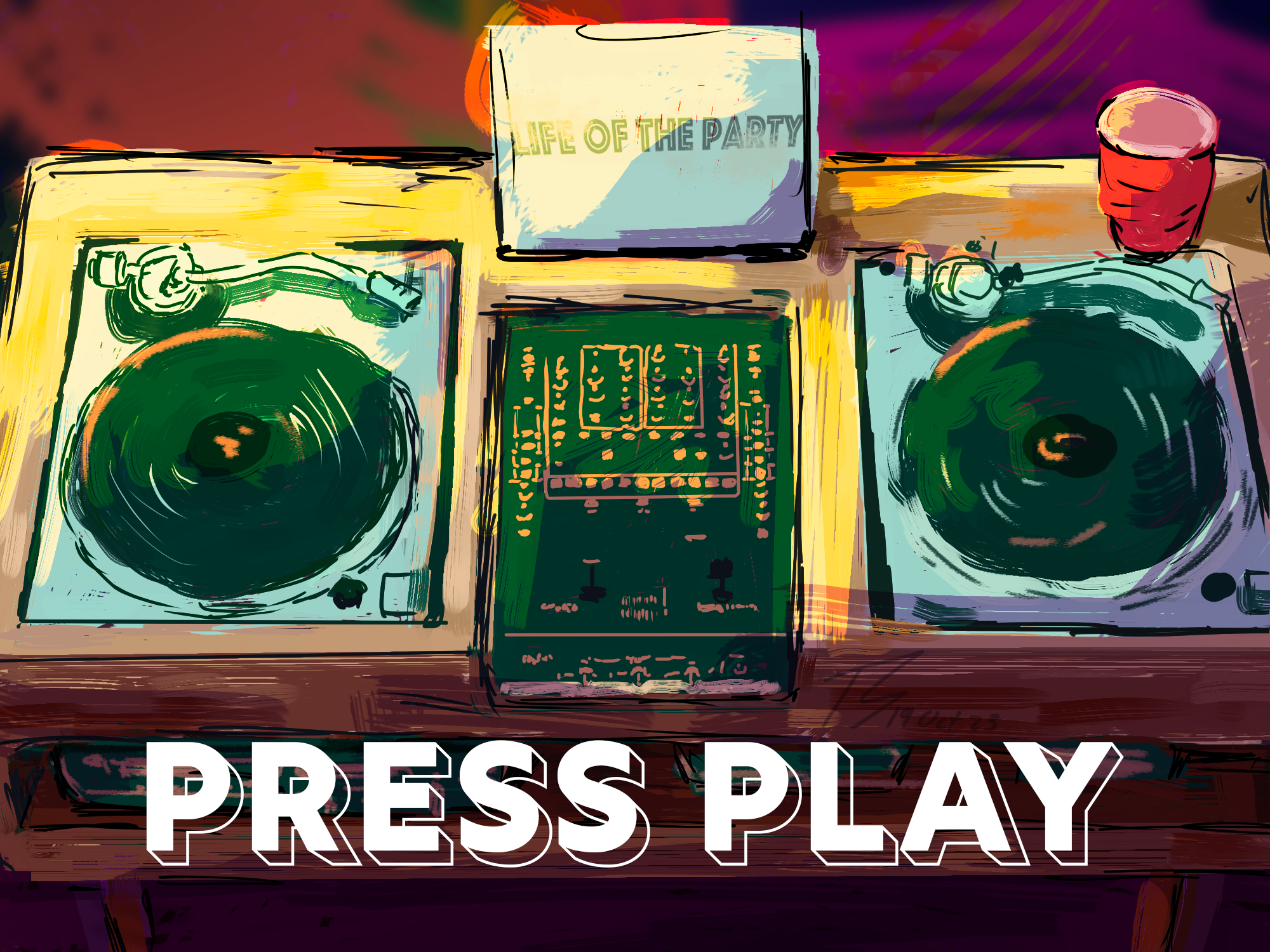‘Press Play’ is a column that seeks to spotlight people of Stanford and the collections of songs that power them through their days. Each installation will feature different Stanford students, faculty members or affiliates, and highlight a playlist that is meaningful to them and their experiences on the Farm.
From Eurotrash to nights at Enchanted Broccoli Forest (EBF), many Stanford students have a party story they either love to tell or will take to their grave. Several factors define a good party: the theme, the people and — arguably, the most important — the music.
Good music helps you escape from the stress of assignments and internship recruitment. Bad music reiterates how deep in the trenches you are.
The challenge of creating a welcoming and fun party environment is a task often spearheaded by the DJ. Dean Cureton ’26, who has been a DJ at club events and The Arbor, learned the basics of the craft from a Sophomore College class.
“I have many friends who are musicians and already tour as DJs and producers, so I’ve always been inspired to learn from them,” Cureton said. “I also really wanted parties here to play different types of music, and I wanted to influence that somewhat as a DJ.”
Each DJ has different ideas for what gets Stanford students on their feet. According to Cureton, Gracielly Abreu ’26 and Francisco “Fran” Alvarez Clemente ’26, some go-to tracks to get people dancing include “Only” by Nicki Minaj, “Pursuit of Happiness” by Kid Cudi and “No Me Conoce” by Bad Bunny, J Balvin and Jhayco. Cureton has a regular playlist called “turn-up,” while the other two DJs do not have a consistent setlist.
What do students look for in party music? It appears to be a mixed bag.
When asking students to reflect on party music preferences, responses often came with a laugh; some came with a half grimace, perhaps alluding to an unfortunate musical experience. A recurring demand is for songs that partygoers are familiar with.
“We need songs we know and can dance to, even if they are objectively bad songs,” said Eliza Siebers ’26.
Preferred genres appear to vary among students, with pop, rap and house music standing out as favorites.
“I really liked the music at Phi Psi Barbenheimer,” said Bridget Stuebner ’26, referring to the all-campus event that happened on Oct. 14. “They played lots of pop and nostalgic 2010s music.”
Alvarez Clemente said students would express discontent whenever he “went five minutes without playing a 2010s throwback.”
Not all students find pop and house music appealing at parties, however.
“I don’t like the music played at most parties, because it’s just basic pop songs from the 2010s,” said Temi Ogunremi ’26.
Cureton has a clear favorite genre to play at parties. “Rap — it’s what I’m most well-versed in and what I listened to growing up, so it’ll always be my genre of choice,” he said.
Abreu, who DJs at EBF, prefers to switch up the genres she plays to accommodate different tastes. Alvarez Clemente, a frequent at Sigma Nu events, plays pop music in campus events but mostly reggaetón and house back home in Miami.
While pop music is the most predominantly played at parties, house music seems to be the most divisive among partygoers. House music is defined by its quick, repetitive electronic beat, favored by many DJs who want easy transitions between songs. In fact, the genre is defined by beat rather than lyrics.
“I’d take ‘Party in the USA’ over mid house music any day, but when it’s good — that’s transformative,” said Nora Mousa ’24.
Students’ contrasting musical preferences shape DJs’ approach to curating setlists.
“The role of the Stanford party DJ has been to find the music that is most widely recognizable and generates the most hype,” Cureton said. He believed this approach was a double-edged sword.
“It’s important to ask Stanford partygoers how willing they are to let go of their musical expectations and just be willing to dance to whatever the DJ decides to play,” Cureton added. “It’s impossible to please everyone all the time, so maybe it’d help if all of us were more open-minded.”
